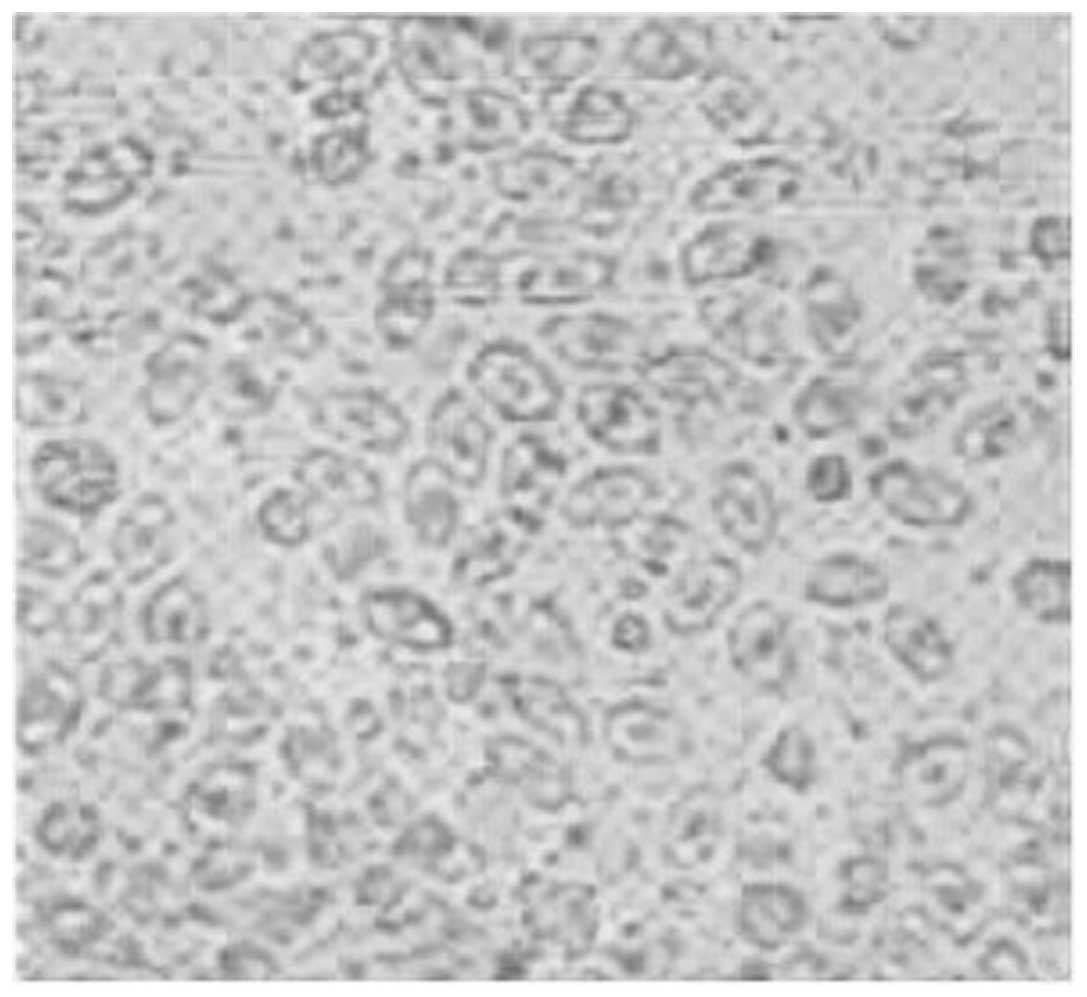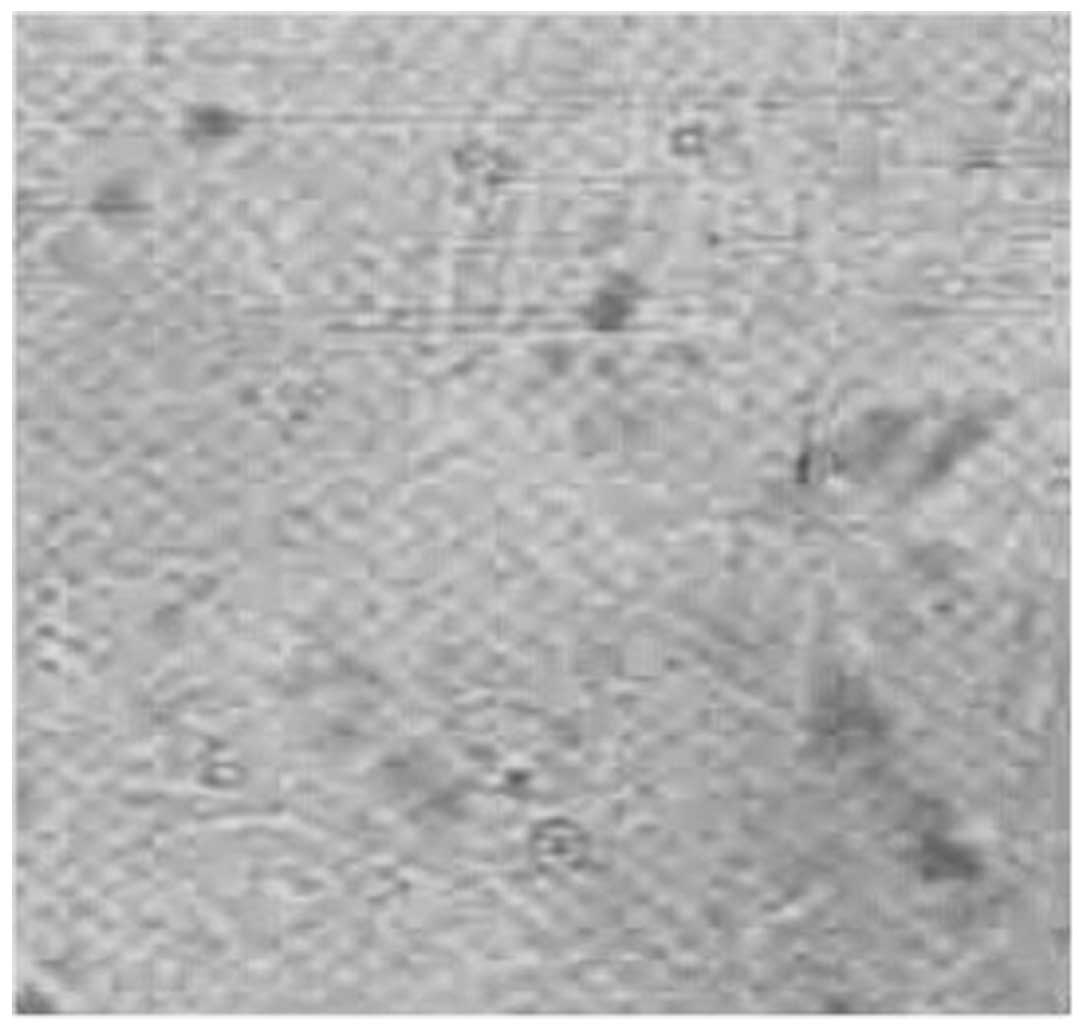|
1
|
Rong Y, Song H, You S, Zhu B, Zang H, Zhao
Y, Li Y, Wan Z, Liu H, Zhang A, et al: Association of Toll-like
receptor 3 polymorphisms with chronic hepatitis B and hepatitis
B-related acute-on-chronic liver failure. Inflammation. 36:413–418.
2013. View Article : Google Scholar : PubMed/NCBI
|
|
2
|
Tong MJ, Pan CQ, Hann HW, Kowdley KV, Han
SH, Min AD and Leduc TS: The management of chronic hepatitis B in
Asian Americans. Dig Dis Sci. 56:3143–3162. 2011. View Article : Google Scholar : PubMed/NCBI
|
|
3
|
Zhao Q, Peng L, Huang W, Li Q, Pei Y, Yuan
P, Zheng L, Zhang Y, Deng J, Zhong C, et al: Rare inborn errors
associated with chronic hepatitis B virus infection. Hepatology.
56:1661–1670. 2012. View Article : Google Scholar : PubMed/NCBI
|
|
4
|
Meier A: Visualization and
characterization of HBV-receptor interactions (unpublished PhD
dissertation). Heidelberg University 2010.
|
|
5
|
Köck J and Schlicht HJ: Analysis of the
earliest steps of hepadnavirus replication: genome repair after
infectious entry into hepatocytes does not depend on viral
polymerase activity. J Virol. 67:4867–4874. 1993.PubMed/NCBI
|
|
6
|
Drexler JF, Geipel A, König A, Corman VM,
van Riel D, Leijten LM, Bremer CM, Rasche A, Cottontail VM, Maganga
GD, et al: Bats carry pathogenic hepadnaviruses antigenically
related to hepatitis B virus and capable of infecting human
hepatocytes. Proc Natl Acad Sci USA. 110:16151–16156. 2013.
View Article : Google Scholar : PubMed/NCBI
|
|
7
|
Lanford RE, Chavez D, Brasky KM, Burns RB
3rd and Rico-Hesse R: Isolation of a hepadnavirus from the woolly
monkey, a New World primate. Proc Natl Acad Sci USA. 95:5757–5761.
1998. View Article : Google Scholar : PubMed/NCBI
|
|
8
|
Menne S and Cote PJ: The woodchuck as an
animal model for pathogenesis and therapy of chronic hepatitis B
virus infection. World J Gastroenterol. 13:104–124. 2007.
View Article : Google Scholar : PubMed/NCBI
|
|
9
|
Schultz U, Grgacic E and Nassal M: Duck
hepatitis B virus: An invaluable model system for HBV infection.
Adv Virus Res. 63:1–70. 2004. View Article : Google Scholar : PubMed/NCBI
|
|
10
|
Nassal M, Leifer I, Wingert I, Dallmeier
K, Prinz S and Vorreiter J: A structural model for duck hepatitis B
virus core protein derived by extensive mutagenesis. J Virol.
81:13218–13229. 2007. View Article : Google Scholar : PubMed/NCBI
|
|
11
|
Murray SM, Freiman JS, Vickery K, Lim D,
Cossart YE and Whiteley RK: Duck hepatitis B virus: A model to
assess efficacy of disinfectants against hepadnavirus infectivity.
Epidemiol Infect. 106:435–443. 1991. View Article : Google Scholar : PubMed/NCBI
|
|
12
|
Wong DK, Yuen MF, Yuan H, Sum SS, Hui CK,
Hall J and Lai CL: Quantitation of covalently closed circular
hepatitis B virus DNA in chronic hepatitis B patients. Hepatology.
40:727–737. 2004. View Article : Google Scholar : PubMed/NCBI
|
|
13
|
Levrero M, Pollicino T, Petersen J,
Belloni L, Raimondo G and Dandri M: Control of cccDNA function in
hepatitis B virus infection. J Hepatol. 51:581–592. 2009.
View Article : Google Scholar : PubMed/NCBI
|
|
14
|
Yang HC and Kao JH: Persistence of
hepatitis B virus covalently closed circular DNA in hepatocytes:
Molecular mechanisms and clinical significance. Emerg Microbes
Infect. 3:e642014. View Article : Google Scholar : PubMed/NCBI
|
|
15
|
Li G, Fu L, Jiang J, Ping Y, Huang Y and
Wang Y: SiRNA combinations mediate greater suppression of hepatitis
B virus replication in mice. Cell Biochem Biophys. 69:641–647.
2014. View Article : Google Scholar : PubMed/NCBI
|
|
16
|
Qi FH, Wang ZX, Cai PP, Zhao L, Gao JJ,
Kokudo N, Li AY, Han JQ and Tang W: Traditional Chinese medicine
and related active compounds: A review of their role on hepatitis B
virus infection. Drug Discov Ther. 7:212–224. 2013. View Article : Google Scholar : PubMed/NCBI
|
|
17
|
Qiu LP, Chen L and Chen KP: Antihepatitis
B therapy: A review of current medications and novel small molecule
inhibitors. Fundam Clin Pharmacol. 28:364–381. 2014. View Article : Google Scholar : PubMed/NCBI
|
|
18
|
Zhou YB, Wang YF, Zhang Y, Zheng LY, Yang
XA, Wang N, Jiang JH, Ma F, Yin DT, Sun CY and Wang QD: In vitro
activity of cepharanthine hydrochloride against clinical wild-type
and lamivudine-resistant hepatitis B virus isolates. Eur J
Pharmacol. 683:10–15. 2012. View Article : Google Scholar : PubMed/NCBI
|
|
19
|
Nassal M: Hepatitis B viruses: Reverse
transcription a different way. Virus Res. 134:235–249. 2008.
View Article : Google Scholar : PubMed/NCBI
|
|
20
|
Tujios SR and Lee WM: Update in the
management of chronic hepatitis B. Curr Opin Gastroenterol.
29:250–256. 2013. View Article : Google Scholar : PubMed/NCBI
|
|
21
|
Schacke M, Glück B, Wutzler P and
Sauerbrei A: In vitro cultivation and cryopreservation of duck
embryonic hepatocytes. J Virol Methods. 157:25–31. 2009. View Article : Google Scholar : PubMed/NCBI
|
|
22
|
Sauerbrei A, Schacke M, Schultz U, Egerer
R, Merkle I, Glebe D, Gerlich W and Wutzler P: Alternative methods
for validation of cell culture infection with duck hepatitis B
virus. J Virol Methods. 129:178–185. 2005. View Article : Google Scholar : PubMed/NCBI
|
|
23
|
Wang Y, Li Y, Yang C, Hui L, Han Q, Ma L,
Wang Q, Yang G and Liu Z: Development and application of a
universal Taqman real-time PCR for quantitation of duck hepatitis B
virus DNA. J Virol Methods. 191:41–47. 2013. View Article : Google Scholar : PubMed/NCBI
|
|
24
|
Mohamadkhani A, Jazii FR, Sayehmiri K,
Jafari-Nejad S, Montaser-Kouhsari L, Poustchi H and Montazeri G:
Plasma myeloperoxidase activity and apolipoprotein A-1 expression
in chronic hepatitis B patients. Arch Iran Med. 14:254–258.
2011.PubMed/NCBI
|
|
25
|
Zhang Z, Zhang JY, Wang LF and Wang FS:
Immunopathogenesis and prognostic immune markers of chronic
hepatitis B virus infection. J Gastroenterol Hepatol. 27:223–230.
2012. View Article : Google Scholar : PubMed/NCBI
|
|
26
|
Zhong B, Huang MP, Yin GQ and Gao X:
Effects of costimulation on intrahepatic immunopathogenesis in
patients with chronic HBV infection. Inflamm Res. 63:217–229. 2014.
View Article : Google Scholar : PubMed/NCBI
|
|
27
|
Wang YX, Wen YM and Nassal M: Carbonyl J
acid derivatives block protein priming of hepadnaviral P protein
and DNA-dependent DNA synthesis activity of hepadnaviral
nucleocapsids. J Virol. 86:10079–10092. 2012. View Article : Google Scholar : PubMed/NCBI
|
|
28
|
Funk A, Mhamdi M, Will H and Sirma H:
Avian hepatitis B viruses: Molecular and cellular biology,
phylogenesis and host tropism. World J Gastroenterol. 13:91–103.
2007. View Article : Google Scholar : PubMed/NCBI
|
|
29
|
Kumar A, Dwivedi M, Misra SP, Narang S,
Tiwari BK and Pandey R: Clinical profile, genotype and management
updates of hepatitis B virus. Indian J Virol. 22:1–10. 2011.
View Article : Google Scholar : PubMed/NCBI
|
|
30
|
Guo H, Mao R, Block TM and Guo JT:
Production and function of the cytoplasmic deproteinized relaxed
circular DNA of hepadnaviruses. J Virol. 84:387–396. 2010.
View Article : Google Scholar : PubMed/NCBI
|
|
31
|
Kock J, Rosler C, Zhang JJ, Blum HE,
Nassal M and Thoma C: Generation of covalently closed circular DNA
of hepatitis B viruses via intracellular recycling is regulated in
a virus specific manner. PLoS Pathog. 6:e10010822010. View Article : Google Scholar : PubMed/NCBI
|
|
32
|
Campagna MR, Liu F, Mao R, Mills C, Cai D,
Guo F, Zhao X, Ye H, Cuconati A, Guo H, et al: Sulfamoylbenzamide
derivatives inhibit the assembly of hepatitis B virus
nucleocapsids. J Virol. 87:6931–6942. 2013. View Article : Google Scholar : PubMed/NCBI
|
|
33
|
Cao F, Jones S, Li W, Cheng X, Hu Y, Hu J
and Tavis JE: Sequences in the terminal protein and reverse
transcriptase domains of the hepatitis B virus polymerase
contribute to RNA binding and encapsidation. J Viral Hepat.
21:882–893. 2014. View Article : Google Scholar : PubMed/NCBI
|
|
34
|
Fu L and Cheng YC: Role of additional
mutations outside the YMDD motif of hepatitis B virus polymerase in
L(-)SddC (3TC) resistance. Biochem Pharmacol. 55:1567–1572. 1998.
View Article : Google Scholar : PubMed/NCBI
|
|
35
|
Liang J, Tang YF, Wu FS and Deng X:
Entecavir versus lamivudine for the treatment of chronic hepatitis
B: A systematic review. Pharmazie. 67:883–890. 2012.PubMed/NCBI
|
|
36
|
Liu Q and Jia RY: Research on the gene
structure of duck hepatitis B virus and its encoding proteins. Bing
Du Xue Bao. 28:681–688. 2012.(In Chinese). PubMed/NCBI
|
|
37
|
Finlay WJ, Bloom L and Cunningham O: Phage
display: A powerful technology for the generation of high
specificity affinity reagents from alternative immune sources.
Methods Mol Biol. 681:87–101. 2011. View Article : Google Scholar : PubMed/NCBI
|
|
38
|
Jin HE, Farr R and Lee SW: Collagen
mimetic peptide engineered M13 bacteriophage for collagen targeting
and imaging in cancer. Biomaterials. 35:9236–9245. 2014. View Article : Google Scholar : PubMed/NCBI
|
|
39
|
Koduvayur SP, Gussin HA, Parthasarathy R,
Hao Z, Kay BK and Pepperberg DR: Generation of recombinant
antibodies to rat GABAA receptor subunits by affinity selection on
synthetic peptides. PLoS One. 9:e879642014. View Article : Google Scholar : PubMed/NCBI
|
















